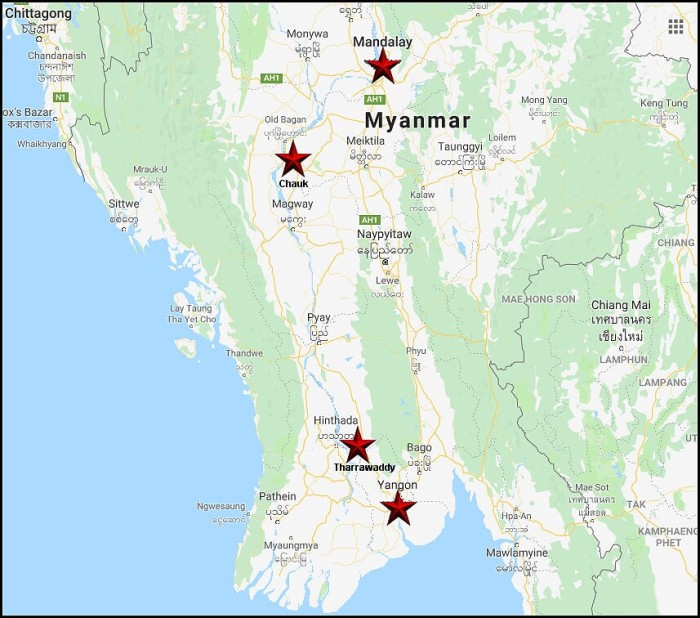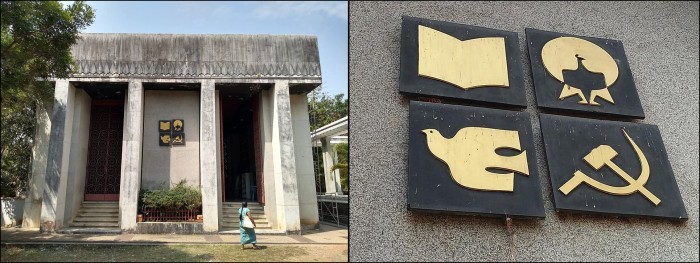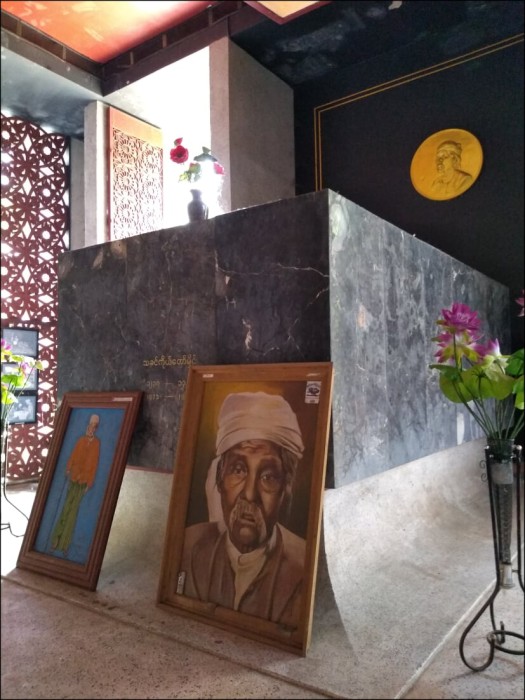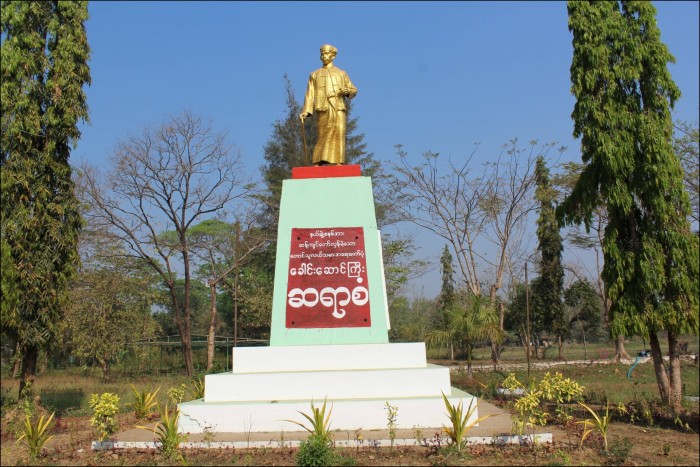For more by the author, see his article “Putting-Out’s Return: Informalization and Differential Subsumption in Thailand’s Garment Sector” in Focaal, freely available to all readers until 22 May 2019.
Opening his 1990 political history, The Rise and Fall of the Communist Party of Burma, the Bangkok-based journalist Bertil Lintner summarized the then recent end to the party’s 40-year insurrection: “It’s cessation was not the outcome of a successful government offensive or of a generous amnesty policy, but of an all-out mutiny within the rank-and-file” (1990: 1). The party, by then deeply invested in the Golden Triangle’s heroin economy, had long since lost the level of popular support it had once achieved for advocating the interests of workers and peasants, and for its role in fighting Japan’s World War II fascist occupation and Britain’s postwar efforts to reassert colonial rule. Meanwhile, the military-backed Burma Socialist Programme Party, which since the 1962 military coup had ruled the country as sole legal political party, itself imploded in the face of mass anti-government protests in 1988. In any case, the party had long ago eviscerated its meager socialist credentials, as when it dispatched soldiers to massacre workers participating in the 1974 general strike. To this day, discussion of leftist politics in Myanmar is overdetermined by these inglorious historical facts, which mark the declining years of socialism and communism in the country.
At the same time, however, key figures in Myanmar’s leftist history continue to earn well-deserved veneration domestically for their roles in the country’s anti-colonial, anti-fascist, and anti-capitalist struggles. There has, moreover, been a recent surge in the domestic republication of leftist literature from the late colonial and early independence periods. And new monuments have gone up in Myanmar in acknowledgment of the important historical roles of key leftist thinkers, activists, and organizers. It was, therefore, in the spirit of revisiting Myanmar’s leftist history and reflecting on its relevance for the country’s ongoing social justice struggles that, over the past several years, Burmese comrades and I paid visits to a handful of such monuments—specifically, those built to commemorate Thakin Kodaw Hmaing, Saya San, Thakin Po Hla Gyi, and Thakin Ba Hein.
The first such site to be addressed here is the mausoleum of the anti-colonial nationalist, writer, and poet Thakin Kodaw Hmaing (1876–1964). Ardent critic of colonial rule, Kodaw Hmaing played a key role in articulating a particularly Burmese form of Buddhist-Marxist syncretism, which informed the leftist turn in the country’s anti-colonial struggles during the 1930s. Among the more memorable of his syncretic neologisms was lawka-neikban, or “worldly Nirvana,” which he coined to characterize socialism/communism in terms that would resonate with Myanmar’s predominantly Buddhist population. The title “Thakin” (meaning “master”) was an ironic honorific adopted by members of the radical, and largely leftist, student organization Dobama Asiayone, which Kodaw Hmaing joined in 1934, quickly becoming the organization’s intellectual patron. In later years, after Myanmar had won its independence, Kodaw Hmaing became a tireless advocate for peaceful resolution to the country’s enduring civil wars, leading the Soviet government to award him the Stalin Peace Prize in 1954, a year after he first visited Moscow.
Located in the Kandawmin Garden Mausolea complex near Yangon’s Shwedagon Pagoda, Thakin Kodaw Hmaing’s mausoleum was completed in 1966, two years after his death. The monument sits next to similar edifices erected to honor U Thant (former UN-Secretary General), Daw Khin Kyi (spouse of the Communist Party of Burma cofounder Aung San), and Supayalat (queen consort of Thibaw Min, the last king of Myanmar). The mausoleum’s facade displays the four symbols with which, by the end of his life, Kodaw Hmaing had come to be associated: a book symbolizing his writing, a dove symbolizing his peace efforts, a peacock symbolizing his anti-colonial nationalism, and a hammer and sickle symbolizing his emancipatory aspirations for the country’s workers and peasants, as well as his leftist politics more generally. Most recently, on 23 March 2019, admirers of Kodaw Hmaing commemorated at the mausoleum the 143rd anniversary of the poet’s birth.
Next, some three and a half hours north of Yangon by car, Tharrawaddy District is honored in Myanmar as the starting point of the 1930–1932 peasant uprising, or the Saya San Rebellion, as it is sometimes called. Saya San (1876–1931), a traditional healer and former Buddhist monk, was active in organizing aggrieved peasants in Tharrawaddy to take up arms against the colonial government amid the economic crisis of the Great Depression. The British retaliated with a viscous counter insurgency campaign, killing some 1,300 peasant rebels, including Saya San himself, whom colonial authorities convicted and executed in 1931 (Aung-Thwin 2011: 8). Although Saya San did not articulate the uprising in explicitly leftist terms, later historians and politicians in the country came to interpret the uprising in a broadly left-nationalist idiom. And in 1987, the military/socialist government issued a new 90-kyat banknote displaying a portrait of Saya San.
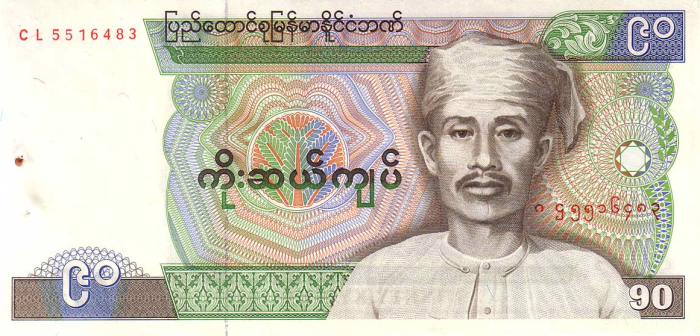
Figure 4: The 90-kyat bill issued in 1987 displaying a portrait of Saya San (photograph by nsmm45 via Wikimedia Commons, CC BY-SA 4.0).
Among foreigners, many are familiar with the 1930–1932 uprising because of James Scott (1976) having employed it as a case study in his monograph The Moral Economy of the Peasant. Significantly, while British colonial authorities sought to discredit the uprising by construing Saya San as a pretender to the throne who manipulated ignorant and superstitious peasants, the leftist Burmese author and journalist Banmaw Tin Aung (1961: 226–227) provided a much different reading of events in his novel Ng’aw:
Before long the peasant uprising had spread like a forest fire with great velocity across the whole of Myanmar, and from the start it was not based on any prearranged plan. At that time, no one, no political association or party, had yet organized or encouraged the peasants of all Myanmar. Once starting like that at Thonseh Township, Tharrawaddy District, the reason for spreading like a forest fire with great velocity across the whole of Myanmar was none other than that the peasants of all Myanmar had exploded in anger as a result of the ill treatment and oppression by the British colonialists and their collaborators.
The monument to Saya San sits within the grounds of a small park near a town in Tharrawaddy named after the rebel leader. Below the statue, the text on the platform reads: “Saya San, great leader of the revolutionary peasant uprising against imperialism.”
Subsequently, in January 1938—six years after the defeat of the Saya San Rebellion—some 10,000 workers employed on the oilfields outside the towns of Chauk and Yenangyaung, in what is now Magway Region, and at oil refineries in Syriam (Thanlyin), went on strike over issues of pay, and working and living conditions. They demanded, as well, that control of the oilfields be handed over to the workers themselves. Among the organizers of the strike was a manual laborer who came to be known as Thakin Po Hla Gyi (1908?–1943?). At the height of the strike, Po Hla Gyi penned a short booklet titled The Strike War, which was sold to raise funds for the strike. The booklet, an English translation of which is available online, lays out a program for direct working class participation in the country’s anti-capitalist, anti-colonial struggle. Thus writes Po Hla Gyi ([1938] 2012):
There should be no doubt that taking hold like a great weapon of the methods included in this publication called The Strike War will enable the easy abolishment of the capitalist system of exploitation, oppression, and tyranny. In other words, the poor must take hold of this great weapon [the strike] that makes the capitalist robbers run for their lives trembling in fear.
As with Saya San, the Burma Socialist Programme Party attempted to co-opt the legacy of Po Hla Gyi by issuing a new banknote in 1987 with the latter’s portrait on one side and the colonial oilfields on the other.
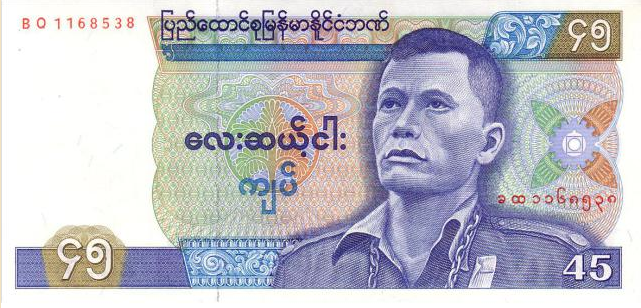
Figure 6: The 45-kyat bill issued in 1987 displaying a portrait of Thakin Po Hla Gyi (photograph by nsmm45 via Wikimedia Commons, CC BY-SA 4.0).
At the time of the 1938 strike, the workers involved drew significant public support and, in combination with widespread student and peasant mobilizations, helped align popular sentiment toward the anti-capitalist, anti-colonial struggle in what came to be known, according to the Burmese calendar, as Revolution Year 1300. In July 1938, however, at the height of the action, anti-Indian riots broke out in Rangoon, which, aside from their horrific violence, threatened interethnic working-class solidarity and shifted public interest away from the strike—this, at least, is how Thakin Po Hla Gyi ([1938] 2012) interpreted the events:
Each time these riots have occurred they have caused the uprisings of the poor against the capitalists to fade from public attention. The capitalists’ stratagem of causing dissension has been able to bring about division between those who have been close . . . It can be seen that each time a strike uprising occurs an Indo-Burmese riot follows and covers over the strike . . . It can be immediately seen that with the emergence of the Indo-Burmese riot, the capitalist government promulgates in reference to that riot many new laws and imposes restrictions on political activities . . . We slaves are engaged in petty internecine fighting. There is no prestige in it at all. And we fail to get at the real issue . . . We should understand that by stirring up religion and ethnicity the matter of the poor vanishes.
Because of Po Hla Gyi’s efforts in the anti-colonial struggle, Burma’s postindependence government canonized him in Myanmar historiography. Presently, in Chauk, where the oilfield workers’ strike began, there are two central monuments to Po Hla Gyi. The first, a simple white plinth bearing a hammer and sickle, was erected in 1950 by the postindependence government of U Nu. The second, immediately in front of the original monument, is a black plinth with a large bust of Po Hla Gyi on top, which was erected in 2013 on the occasion of the 75th anniversary of Revolution Year 1300. Notably, the monument continues to serve as the location for annual May Day rallies by workers from several local oilfield unions, who drawn on the memory of Po Hla Gyi and the 1938 uprising to inform their own ongoing struggles (Khaing 2017).
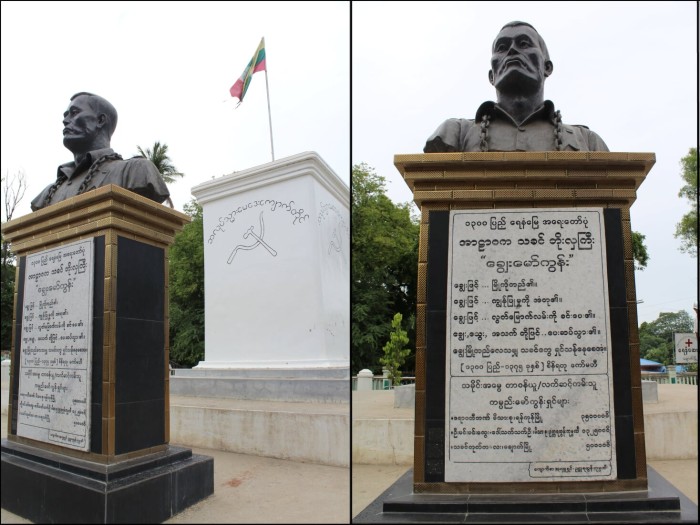
Figure 7: Thakin Po Hla Gyi monuments in Chauk, Magway Region (photograph by Stephen Campbell, 2016).
The final site to be addressed here is the updated monument to Thakin Ba Hein (1917–1946), in Mandalay, which a committee of present-day supporters established and unveiled in June 2017, on the centenary of Ba Hein’s birth. Previously, his remains had been entombed at Ywahaing Cemetery, but they had to be relocated because of construction. The present-day monument has been established in the grounds of the existing Martyrs’ Cemetery, which houses the mausoleum of 17 individuals involved in protests in Mandalay as part of Revolution Year 1300. At the time, the colonial police attacked the protestors, killing the 17 individuals entombed in the mausoleum, among whom were Buddhist monks and children—the youngest of whom was 12 years old.
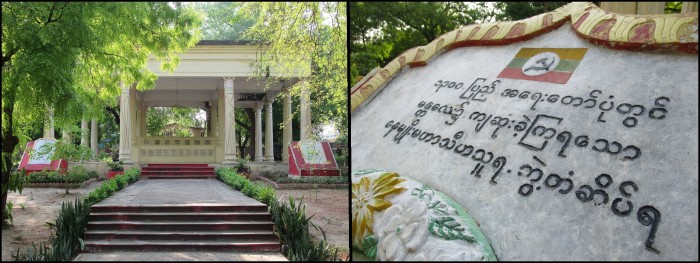
Figure 8: Mausoleum for the Mandalay martyrs of Revolution Year 1300 (1938)—17 protestors whom colonial police massacred in a crackdown on anti-colonial activism (photograph by Stephen Campbell, 2019).
As for Thakin Ba Hein, he became active in the anti-colonial student movement in the 1930s, and he translated Marxist literature into Burmese for the leftist Nagani (Red Dragon) Book Club. He was also involved in supporting the 1938 oil workers’ strike. In the year after the strike, Ba Hein helped cofound the Communist Party of Burma but was then imprisoned by the British colonial government from 1940 to 1942 for his anti-colonial activities. While remaining active in the Communist Party, Ba Hein went on to serve as president of the communist-aligned All Burma Trade Union Congress from 1945 until his premature death from malaria in November 1946 at the age of 29. In subsequent years, Communist Party of Burma intellectuals would deem Ba Hein the father of “true communism” in Myanmar (Lintner 1990: 57).
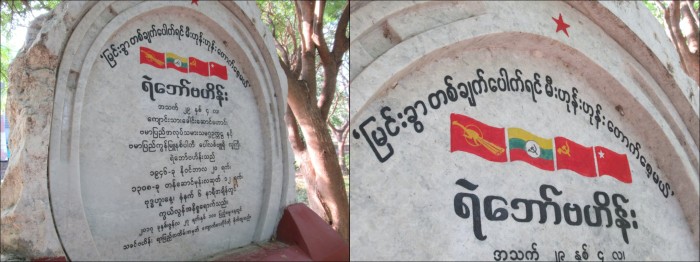
Figure 9: Thakin Ba Hein monument at the Martyrs’ Cemetery in Mandalay (photograph by Stephen Campbell, 2019).
The recently built monument at the new gravesite of “Comrade Ba Hein” displays the peacock flag of the Burmese student moment, as well as two flags bearing the hammer and sickle. Above these is engraved the slogan for which Thakin Ba Hein is in Myanmar most fondly remembered: “By the single stomp of a [police] horse’s hoof, a blaze ignites.” The implication was that the violent crackdown by colonial police on anti-colonial activism would catalyze even more widespread popular mobilization against capitalist, colonial rule.
While the monuments discussed in this post rarely see foreign tourists, there continue to be regular Burmese visitors—pilgrims to the country’s leftist history, you could say. These monuments are additionally significant domestically for providing a material reminder of the noblest aspects of Myanmar’s leftist history, and for motivating present-day workers, peasants, and activists in their ongoing struggles, despite the significant challenges they currently confront and the rightward shift in contemporary Burmese politics.
Stephen Campbell is Assistant Professor in the School of Social Sciences at Nanyang Technological University, and Research Fellow in the Department of Social Anthropology at the University of Bergen. He is the author of Border Capitalism, Disrupted: Precarity and Struggle in a Southeast Asian Industrial Zone (2018), as well as numerous articles on labor issues in Myanmar and Thailand. In 2016, he published “Putting-out’s Return: Informalization and Differential Subsumption in Thailand’s Garment Sector” in Focaal, which is freely available to all readers until 22 May 2019. Many of his publications can be accessed here.
References
Aung-Thwin, Maiitri. 2011. The return of the Galon king: History, Law, and rebellion in colonial Burma. Singapore: NUS Press.
Khaing, Htun. 2017. “‘The Ogre’ still inspiring oil workers, 80 years after landmark oil strike.” Frontier Myanmar, 3 July. https://frontiermyanmar.net/en/the-ogre-still-inspiring-oil-workers-80-years-after-landmark-oil-strike.
Lintner, Bertil. 1990. The rise and fall of the Communist Party of Burma. Ithaca, NY: Cornell University Southeast Asia Program.
Po Hla Gyi, Thakin. (1938) 2012. The strike war. Trans. Stephen Campbell. Passau: Myanmar Literature Project.
Scott, James. The moral economy of the peasant. New Haven, CT: Yale University Press.
Tin Aung, Banmaw. 1961. Ng’aw. Yangon: Kyaw Oo Literature Publishing Department.
Cite as: Campbell, Stephen. 2019. “Touring Myanmar’s leftist history.” FocaalBlog, 14 May. www.focaalblog.com/2019/05/14/stephen-campbell-touring-myanmars-leftist-history.
Discover more from FocaalBlog
Subscribe to get the latest posts sent to your email.
